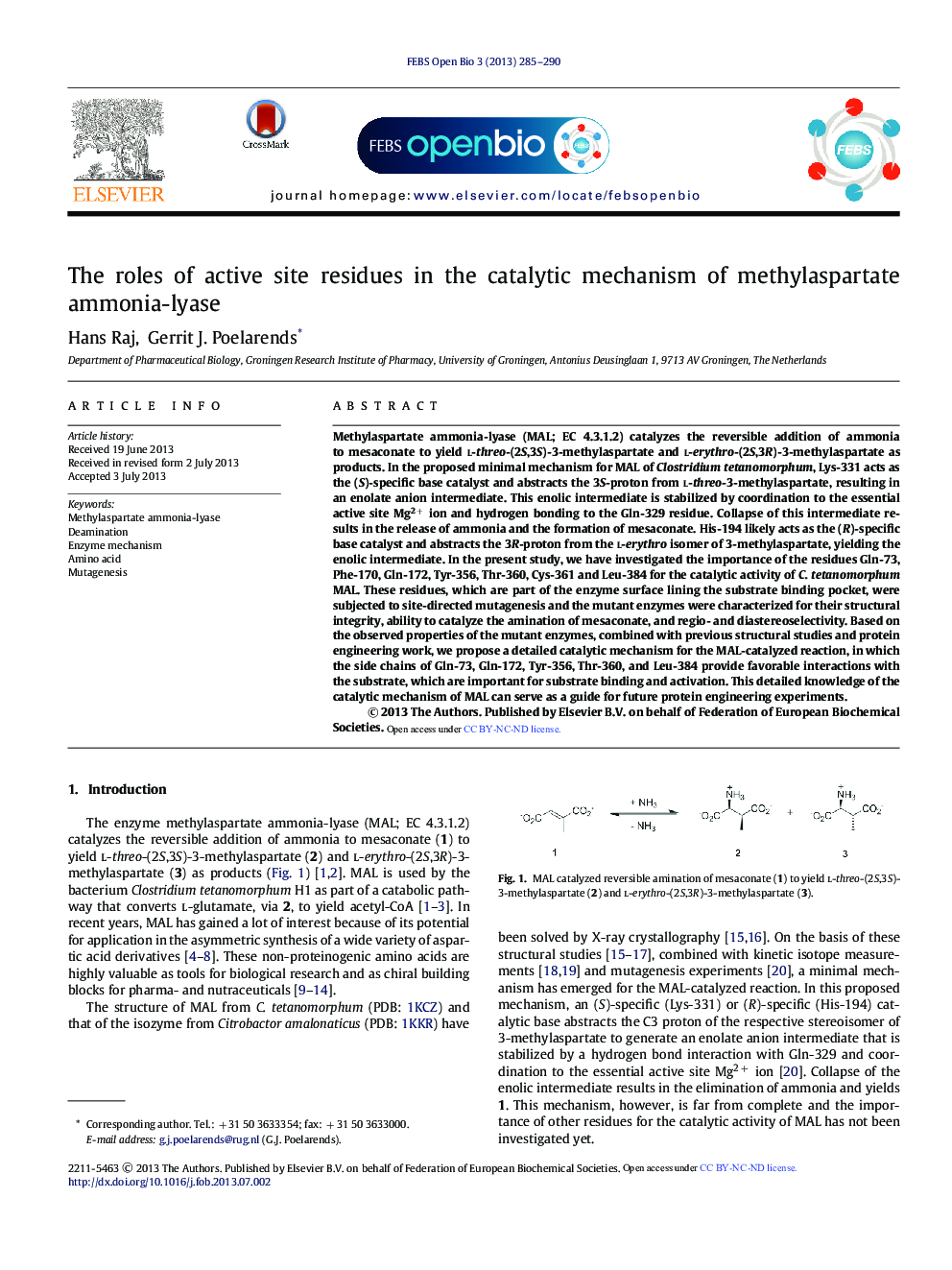| کد مقاله | کد نشریه | سال انتشار | مقاله انگلیسی | نسخه تمام متن |
|---|---|---|---|---|
| 1981797 | 1539421 | 2013 | 6 صفحه PDF | دانلود رایگان |

• A detailed catalytic mechanism for methylaspartate ammonia-lyase is proposed
• Gln-172, Thr-360 and Cys-361 bind the 1-carboxylate group of 3-methylaspartate
• Gln-73 (via a water molecule) and Gln-172 bind the 2-amino group
• Tyr-356 and Leu-384 provide stabilizing interactions with the 3-methyl group
Methylaspartate ammonia-lyase (MAL; EC 4.3.1.2) catalyzes the reversible addition of ammonia to mesaconate to yield l-threo-(2S,3S)-3-methylaspartate and l-erythro-(2S,3R)-3-methylaspartate as products. In the proposed minimal mechanism for MAL of Clostridium tetanomorphum, Lys-331 acts as the (S)-specific base catalyst and abstracts the 3S-proton from l-threo-3-methylaspartate, resulting in an enolate anion intermediate. This enolic intermediate is stabilized by coordination to the essential active site Mg2+ ion and hydrogen bonding to the Gln-329 residue. Collapse of this intermediate results in the release of ammonia and the formation of mesaconate. His-194 likely acts as the (R)-specific base catalyst and abstracts the 3R-proton from the l-erythro isomer of 3-methylaspartate, yielding the enolic intermediate. In the present study, we have investigated the importance of the residues Gln-73, Phe-170, Gln-172, Tyr-356, Thr-360, Cys-361 and Leu-384 for the catalytic activity of C. tetanomorphum MAL. These residues, which are part of the enzyme surface lining the substrate binding pocket, were subjected to site-directed mutagenesis and the mutant enzymes were characterized for their structural integrity, ability to catalyze the amination of mesaconate, and regio- and diastereoselectivity. Based on the observed properties of the mutant enzymes, combined with previous structural studies and protein engineering work, we propose a detailed catalytic mechanism for the MAL-catalyzed reaction, in which the side chains of Gln-73, Gln-172, Tyr-356, Thr-360, and Leu-384 provide favorable interactions with the substrate, which are important for substrate binding and activation. This detailed knowledge of the catalytic mechanism of MAL can serve as a guide for future protein engineering experiments.
Journal: FEBS Open Bio - Volume 3, 2013, Pages 285–290